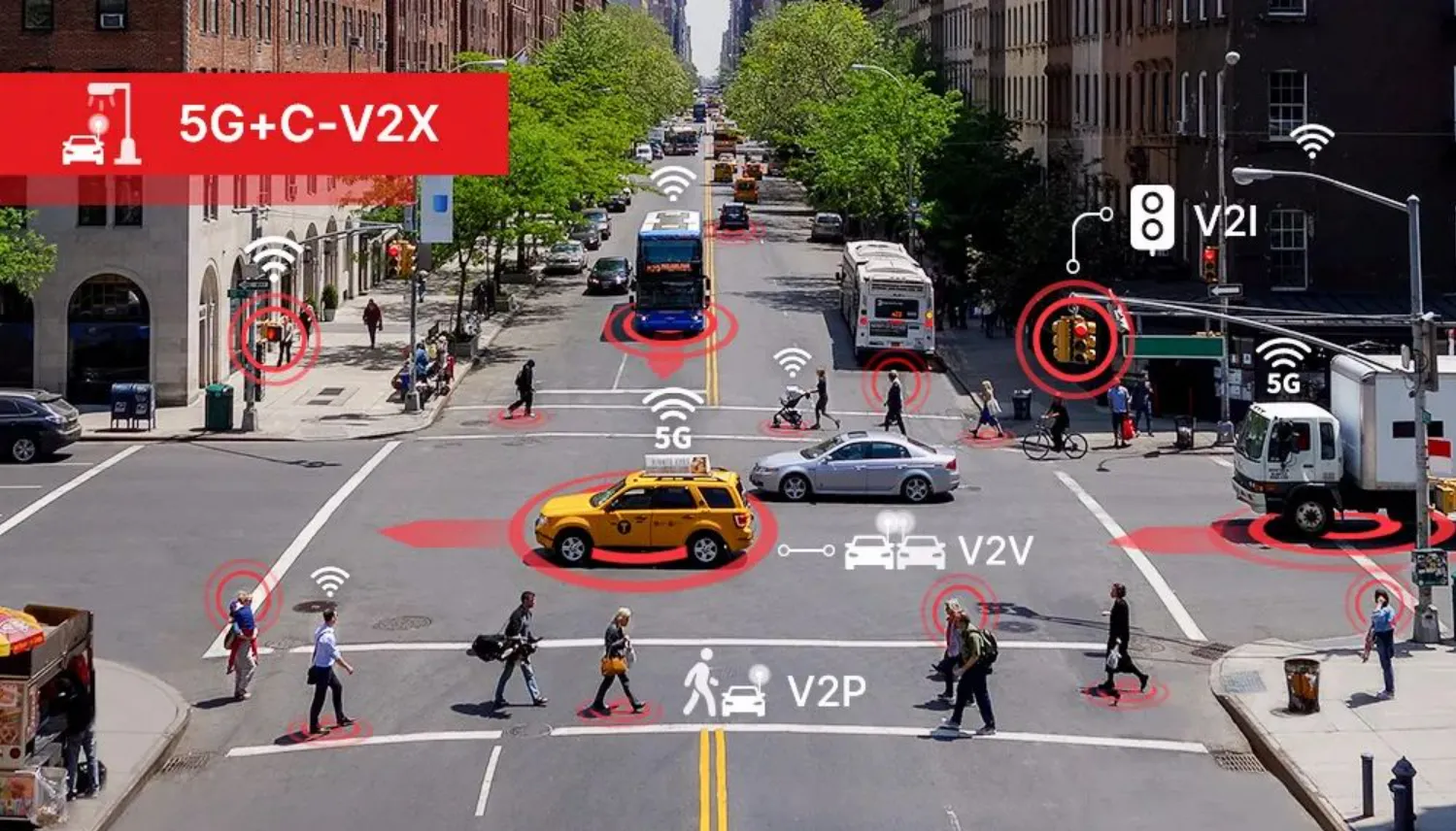Connected Vehicles C-V2X and its underlying components
Connected car communication is a major market in the field of automotive design. With the continuous upgrading of communication technology, the connected car market is accelerating its growth. According to data from some consulting, the global connected car market size will be approximately 162.9 billion US dollars in 2022, and the domestic connected car market size will reach 53 billion US dollars in 2022.
Communication technology is synchronously expanding new communication services with the increasing demand. At the forefront of high-speed communication, vehicle networking technology requires matching connection technology to support communication between vehicles and everything.
C-V2X, Connecting vehicles with everything
At first, vehicle networking communication technology connected the internal control units of vehicles, and then the introduction of various intelligent terminals expanded the connection between vehicles and various types of vehicle terminals. The development of the Internet of Vehicles has made it easy to collect information from the network, which is a visible progress brought about by the development of the Internet of Vehicles.
The next challenge is how to connect the car with the external environment. V2X wireless communication technology for vehicles aims to solve this problem, representing the communication between vehicles and everything around them. There are two main standards in the market that support V2X communication: DSRC (Dedicated Short Range Communication) based on IEEE wireless LAN technology 802.11, and C-V2X (Cellular V2X) based on mobile radio standards. C-V2X is solving the problem of vehicle to everything connectivity.
The representative application of DSRC is ETC, which is a short-range communication technology that has advantages in identifying and communicating with moving targets at high speeds in specific small areas. It can organically connect vehicles with surrounding infrastructure. But currently, the competitiveness in connecting everything is constantly declining, and the advantages of C-V2X are becoming increasingly apparent.
C-V2X communication mainly includes communication scenarios such as vehicle to vehicle V2V, vehicle to pedestrian V2P, vehicle to traffic infrastructure, and vehicle to network. Among them, V2N (vehicle to network) refers to the communication between vehicles and base stations, with a relatively long communication distance of several kilometers or more. Other communication scenarios such as V2P, V2V, and V2I usually have a communication distance of within one kilometer.
With the support of 5G, the speed and quality of C-V2X data transmission will be further improved, achieving ultra reliable and low latency connectivity for all things, ensuring safety during car driving.
Connection components in C-V2X
The key to unleashing the potential of the C-V2X system is the response speed of communication, and the received and processed data must be timely in order for various interconnection functions to be effective.
Behind the high-speed communication of C-V2X system is the application of a large number of board to board connectors and board to wire connectors, as well as precision RF connectors that are crucial for wireless systems. Especially in the current era of rapid development of 5G, the quality of RF connection components will greatly affect the quality of transmitted signals.
In the vehicle mounted C-V2X system, RF connectors have developed rapidly in improving high-frequency signal transmission, lighter and smaller structures, and simplifying complex crimping. Of course, the connection of the in car system should always be based on high reliability. In addition, the trend of miniaturization of RF connectors is already clear, and the increasingly limited system size expects RF connectors to have smaller dimensions and higher interconnect density.
Board to board connectors are also constantly improving data rates and shortening signal rise times in such applications to provide clearer and more reliable high-speed signal transmission.
In the context of the development of data transmission towards higher speeds, it is evident that the infrastructure of in vehicle and in vehicle C-V2X networks is becoming increasingly complex, and the data volume brought by low latency, high-speed V2X will soon reach the upper limit of in vehicle bus performance. The bandwidth required for advanced C-V2X functionality will continue to increase, and Ethernet will be needed to provide support.
The Ethernet connection components suitable for vehicle C-V2X will be reinforced and sealed to ensure sufficient service life in high demand operating environments and to guarantee failure rates. Under the premise of ensuring speed and bandwidth, Ethernet connection components require stronger mechanical performance and better anti vibration performance.
Summary
The development momentum of connected vehicles for all things is good. Although it still faces challenges such as urgent breakthroughs in some key technologies and inadequate supporting facilities, C-V2X has entered a new stage of rapid technological evolution and large-scale application development. The accompanying connecting components provide strong support for technological applications.
To find products and services more accurately, please try entering keywords for search.
For more product and service content, please contact us and send an email to sales@dimud.com.
We sincerely look forward to connecting with you!


